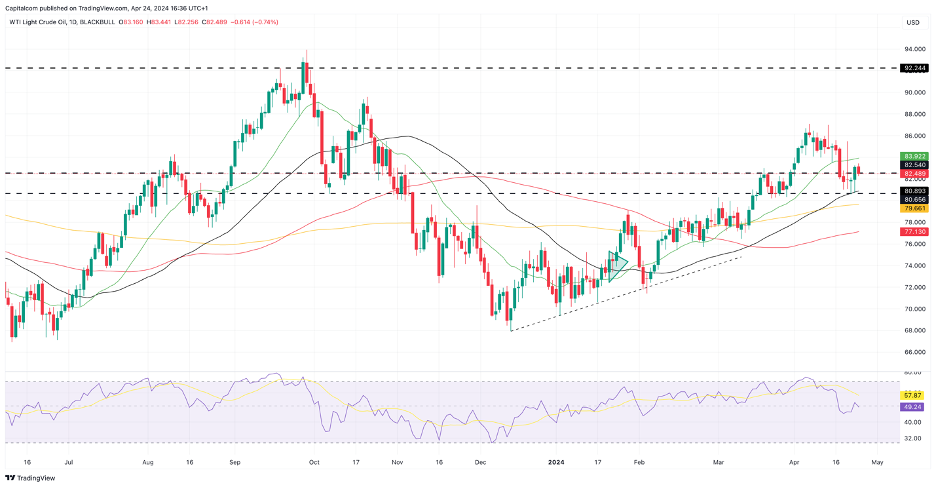Oil slips back into key range despite surprise US crude inventories drop
US crude prices drop back into a key area of resistance/support even after US inventories drop for the first time in a month
Oil futures are struggling to regain their footing this week as traders perceive that risks of the Middle East tensions impacting supply have eased. The lack of damage or casualties following the retaliatory attacks Israel launched on Iran on Friday has led Iranian officials to deny any further retaliation from Tehran, a successful effort from diplomats who have been trying to avoid an all-out war since the attacks began earlier this month.
US crude (WTI) futures have been dropping for the past three weeks as traders price out supply shocks, but Friday’s attack caused traders to re-price some of these risks, pushing WTI back above $85 per barrel. The lack of further developments has left oil traders struggling to consolidate further bullish momentum as risk premiums tend to not last if supply is not actually disrupted. Adding further pressure on oil prices are reports that Russia has downgraded its export price forecasts.
US Crude (WTI) daily chart

Past performance is not a reliable indicator of future results.
Technically, WTI is facing increased pressure from a key support/resistance range between $80.65 and $82.54 per barrel. This area has proved to attract increased two-way trade, often seeing price venture along this range for a few days before being able to break out on either side. The brief rally from the past two days has stalled just below $83.50 as sellers continue to dominate the short-term momentum. The RSI has started to drop below the mid-line (50) suggesting the bearish pressure continues to consolidate.
That said, buyers attempted to reverse the daily losses on Wednesday afternoon as the latest US inventory data showed the first drawdown in a month. Inventories dropped by 6.37 million barrels in the week to April 19th after four weeks of increases totalling 15 million barrels. So far the impact seems to be limited with WTI still down 0.7% on the day at the London close.
US crude inventories

Source: tradingeconomics.com/U.S. Energy Information Administration